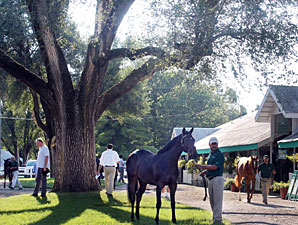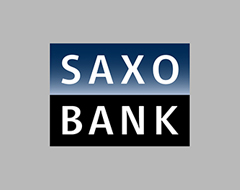By Evan Hammonds, @BH_EHammonds

As the Thoroughbred marketplace braces for this year’s Keeneland September yearling sale—the largest sale of yearlings in the world—consider the following signs:
• Every major 2-year-old sale in 2013 from Barretts in March to the Ocala Breeders’ Sales Co.’s June sale posted double-digit gains year-over-year in both average and median.
• The Fasig-Tipton Kentucky July yearling sale saw its average rise 10.4% and median rise 20% above its 2012 marks.
• In early August at Saratoga, the select sale held its own against last year’s figures and the New York-bred sale of preferred yearlings went “boom” with a 64.6% rise in gross and a 15.9% advance in average.
• Vigor returned to the yearling market in Ocala, Fla., at the Aug. 20-22 OBS select and open sale where the average and median popped more than 20% over 2012 figures.
• The New York Racing Association, which accounts for the largest segment of pari-mutuel handle in the country, is in the midst of resurgence with purses fueled by the Resorts World Casino New York City. Maiden special weight purses in the Empire State have risen to $70,000—and may go higher.
• The stock market in the U.S. has rebounded to post 2007 levels and the S&P 500 Index has risen nearly 18% in the last 12 months.
• Looking for any downward trends? How about RNA levels falling dramatically at this year’s summer yearling sales and a reduced foal crop. Pent-up demand meets dwindling supply as the general economy improves, bringing people with more discretionary income back into the Thoroughbred business.
The outlook looks bright for sellers at this year’s sale (Sept. 9-21) in Lexington where 3,908 yearlings have been cataloged for this year’s 12-day run (there will no selling Friday, Sept. 13). While the number of yearlings offered is up from last year’s 3,604 cataloged, the figure is down 9.5% from the 4,319 cataloged in 2011 and down nearly a third (29.6%) from the apex of the market in 2008 when 5,555 yearlings were on offer.
“Everything has set up well for this year’s sale,” said Geoffrey Russell, director of sales for Keeneland. “The number one factor that will affect this year’s sale is supply and demand. There seems to be increased interest, which we hope goes into demand.”
The success of the 2-year-old market meant success for yearling-to-juvenile pinhookers, who figure to return with enthusiasm to restock their shelves.
“It’s as simple as this: The pinhookers made money this year,” said Walt Robertson, Keeneland’s vice president of sales. “Believe me, they never fail to bring it back to the market. That’s one thing for certain. The law of supply and demand is our friend, and it has been for a little while after it went the other way.”
The September sale market has improved dramatically since its low point in 2009 when the average price bottomed to $60,734 from a high of $112,427 in 2006. Last year, the average yearling sold at Keeneland for $87,354—a 43.8% increase in a three-year period. The median during that span more than doubled from $22,000 to $45,000.
The buyers are coming back.
“A comfort zone is now there that I don’t think was there before,” said consignor Francis Vanlangendonck of Summerfield Sales near Ocala, Fla. “A lot of these guys had backed up and wanted to see what was going on, not just in the horse business, but around the world. They’ve got some cash that they can spend. This business is one people love to participate in and now that they have little more confidence, they’re willing to step back in.”
At the same time, breeders have had a chance to get their heads above water for the first time in a few years. The average stud fee breeders paid to produce those yearlings—a good portion of their costs—has fallen from an average of $43,002 in 2010 to $31,199 for this year’s crop.
“All indicators are that the higher end of the market is back and stronger than it has been in many years,” said John Sikura of Hill ‘n’ Dale Sales Agency. “Most people that own horses are in other businesses, so when they are bullish on their own primary business, and the overall economy, they will make more purchases in the ultra-luxury items like horses and art. Recovery has taken place and we’re now in a stable, ascending market.
“North American trainers and owners need good horses and they’ll find them here at this sale,” he said. “There are less of them to choose from and I think they will be very much in demand.”
Four-Day Format
Sellers and shoppers this year will kick off the September sale under a new format where the first four days of the sale (Sept. 9-12) will be “Book One” featuring 875 yearlings. A year ago, 132 “select” yearlings were sold as Book One, followed by a three-day Book Two. The year before, the Book One yearlings were sold over two evening sessions, followed by a three-day Book Two run. With Keeneland officials tweaking the format to better suit buyer’s and seller’s needs, this year’s format spreads the cream of the North American yearling crop out over four days. The idea is to bring together a wider array of buyers and give them more time to shop. Approximately 220 yearlings will be offered each day with sessions starting at noon.
“This is what the market is asking for: A group of horses on the grounds where they can sort through them themselves,” Russell said of the tweaked format. “We want to encourage as many buyers as possible to come out to the sale grounds and look at these horses and think they can’t afford a horse in Book One. We want everybody to be on the grounds and looking. I think this format gives the consignors the ability to showcase their horses to as many buyers as possible and having it this way gives the buyers plenty of time to get these horses evaluated.
“It is a good cross section of horses… these are not going to be long, drawn-out days. We’re not going to tire consignors or buyers.”
Whereas what book yearlings were sold in in the past was of major significance perception-wise as per a horse’s quality, this year Keeneland segments the sale in to three parts: Week One, the Weekend (Sept. 14-15), and Week Two (Sept. 16-21).
“I do hope that this year the buyers recognize that Book One is not what they used to perceive as Book One was and come in with a different mindset that the change in format opens the door for a lot more people of different levels of buying,” said Kitty Taylor of Warrendale Sales. “Last September I started in Book Two which is what Book One is now…and people waited and waited, and then I had strong vetting and horses selling through Books Three, Four, and Five for a lot of money. I had buyers coming to me saying, ‘I wish I had been stronger in Two’ because they thought Book Two was beyond their reach. I think people have learned that now.”
New format and book numbers matter little to buyers and consignors, such as Sikura.
“Horses sell themselves,” he said. “The format’s fine and gives the highest-end guys four days here to get through all the “Book One” and “Book Two” horses and hopefully it is more convenient for them,” he said. “Whatever is best for the buyer, that’s what I want. I’m going to be there all day, every day and I spend a lot time planning these matings and raising foals, so whatever the buyer wants, I want. Go all day? Start at noon; start at 10? Whatever you guys want to do”We want to encourage as many buyers as possible to come out to the sale grounds and look at these horses and think they can’t afford a horse in Book One. just tell me and I’ll make sure I’m there.”
Following the day off from selling, the “weekend” market has seen increased activity in the last few years.
“Buyers are sometimes hesitant in Book One (the old Books One and Two) and I think the sale really takes off after that,” said Marty Buckner of Clarkland Farm, breeder of 2012 champion 2-year-old filly and Keeneland September sale graduate Beholder. “It always seems to take off after the break.”
“The weekend has become a market all to itself,” Russell said. “It is a part of the sale we’ve worked hard on. The credit really goes to Tommy (Thornbury) because he helped when we were formatting the sale. These are valuable horses; they need to be evaluated properly in the barn area. We all call it the ‘day off’ but it’s not. Horses are being evaluated for the next sale. It gives those horses the proper attention they deserve.”
Buyers Habits
As the market constricted following the Great Recession a large segment of the buyers disappeared. Those that remained became even more demanding on the physical scrutiny they placed on yearlings and refused to overspend on prospects. With more players coming back to the business, buyers may now have to be a little less stringent on their guidelines and open up their purse strings a bit wider.
“The last couple of years you had to have a horse that checked every box to sell well,” said Vanlangendonck. “Today you don’t have to check every box. You can have a little bit of this and a little bit of that physically and X-ray wise; buyers still want to buy your horse. They aren’t looking for reasons to take that horse off their list. The base of horses we can sell and make a living on is broadening, which helps. You can now survive doing this thing.”
Consignors, in turn, have gotten stronger at predicting a horse’s value when setting reserves. This new reality gets more horses sold which brings down the RNA rate.
“This is a very realistic market and that is a comment you’re going to hear and you’re going to get tired of hearing,” Russell said. “The consignors have done a marvelous job last year and so far this year in appraising their horses and appraising the interest. Yes, you do get some horses that break out, but they’re not going to break out to the level they did 10 years ago. Buyers are happy to give good money for horses, but they’re not getting carried away.”
The mantra of pre-sale banter the last few years has been “cautiously optimistic.” With as many up indicators as there are heading into the 2013 sale, it might be safe to drop the “cautiously.” However, horses that have problems, or sketchy X-rays will continue to sell poorly; some horses will slip through the cracks. However, there is one constant in any horse sale.
“The marketplace defines their value better than the owner,” Sikura said. “Every owner thinks they’ve got a good horse, it’s up to the buyers to decide.”
The Keeneland September yearling sale gets underway Monday, Sept. 9 at noon.
Read more on BloodHorse.com




